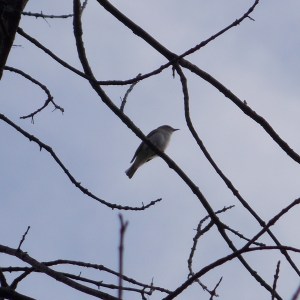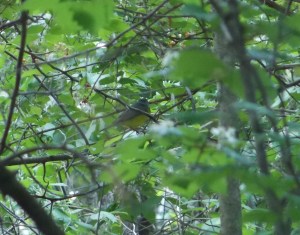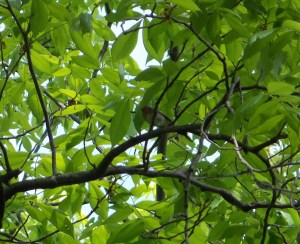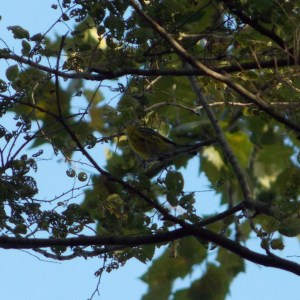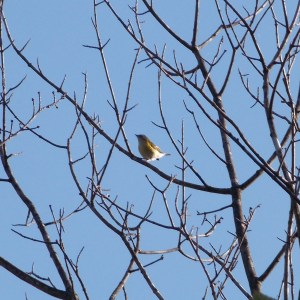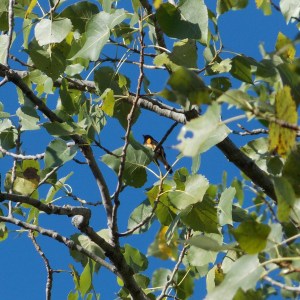Birding has come in short bursts recently, usually in the morning for an hour or so before everyone else is up. With cold temperatures all weekend, this actually proved advantageous for seeing migrants close-up. Bugs aren’t flying when it’s frosty out, so everyone was close to the ground. I got over the century mark and then some on my green list, something that didn’t happen until July last year.
So with great success on Saturday, I took a more relaxed approach to the birds today and did so with company.

“I want to see a starling, Dad.”
Walter and I took a ride around Foster Park with the explicitly stated purpose of seeing birds, and he was pretty cool with it. At less than three years old, he can identify crows by sight and usually points them out before I can get to them. He will also tell you that his favorite bird is the Rested-bread Nuthatch.
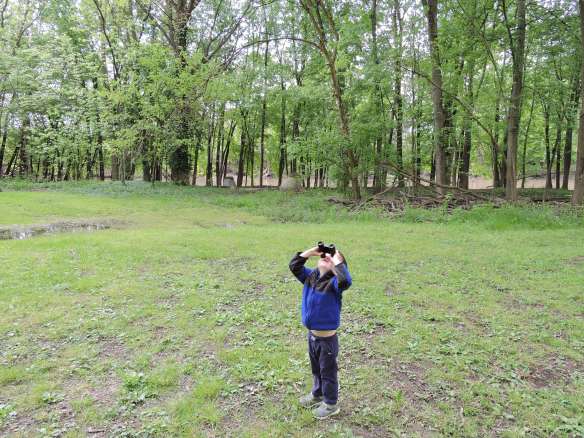
“There is an alligator. It’s crawling around up there.”
He would excitedly ask “where?” every time I tried to point out a bird. He also asked me to launch him into the river (his idea, not tried). Needless to say, our list was small but the outing was a lot of fun.

Our Setup
I will take this time to plug the Burley Honeybee, which is an awesome trailer if you also have small people that you want to take out some time.
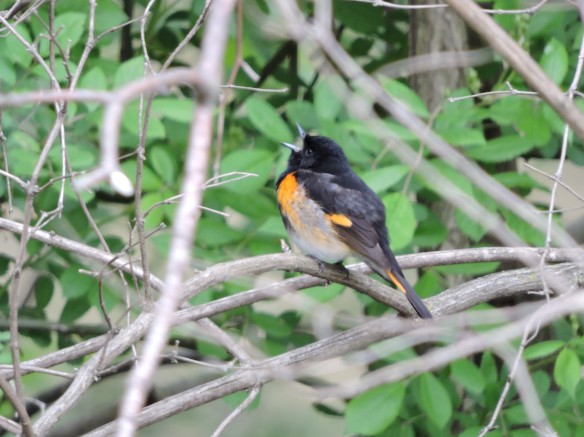
American Redstart
We did actually see some birds, too. American Redstarts are bountiful this year.

Northern Flicker
A loud group of guys teed off behind this flicker, which was foraging on the golf course and not caring.

Red-eyed Vireo
The footbridge at Foster came up big again, with a Red-eyed Vireo at eye level and arm’s length. I played around with the flash on my camera and thought this shot came out interestingly.

Rose-breasted Grosbeak
There were other kids around this weekend, too. A super awkward-looking first spring Rose-breasted Grosbeak was hanging out in our yard. Just look at this picture. From the hideous molt to the old-man eyebrows to the electric line and vinyl siding behind, this is a disgusting photo, and I like it.

Bunneh
Another kid of sorts. This bunny lives in the hostas by our garage and comes out two or three times daily, which is just enough to make one go “squeeee!”

Combo
Squirrel for scale.

Eastern Chipmunk
And while we’re talking about tiny mammals. It seems like any time chipmunks are mentioned or observed, someone will talk about the best and most novel way to murder them. A few missing strawberries are not that big of a deal in my opinion. Even Walter agrees.


